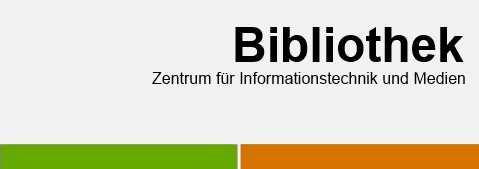Informatik und Kommunikation
Filtern
Erscheinungsjahr
Dokumenttyp
- Konferenzveröffentlichung (45) (entfernen)
Schlagworte
- Akkreditierung (3)
- E-Learning (2)
- Human-Robot Interaction (2)
- Tetraplegie (2)
- Virtuelle Hochschule (2)
- 360° Panorama (1)
- Akademischer Grad (1)
- Alltagsunterstützende Assistenzlösung (1)
- Alternative Geschäftsmodelle (1)
- Arbeitsbelastung (1)
Institut
Auf der Basis eines Wettbewerbs des BMBF von 1997 hat das Konsortium Virtuelle Fachhochschule (VFH) 43 Mio. DM erhalten und 1999 damit begonnen Online-Studiengänge zu entwickeln. Weitere Themenfelder dieses Bundesleitprojektes sind: Struktur und Organisation einer virtuellen Hochschule, Lehr- und Lernformen in Online-Studiengängen, etc. Beteiligt sind 10 Fachhochschulen, 2 Universitäten, sowie diverse Organisationen und Wirtschaftsunternehmen. Im Jahre 2001 startete der Bachelor-Online-Studiengang Medieninformatik (www.oncampus.de). Das Projekt läuft noch bis ins Jahr 2004. Der Autor ist Vizegesamtprojektleiter, Mitglied im Teilvorhaben Struktur und Organisation sowie Entwickler von 3 Lernmodulen zur Physik für das Medieninformatikstudium.
Am Beispiel dieses Großprojektes werden einige Besonderheiten und Erfahrungen zu den Themen: Organisationsformen, Betreuung, Lehrdeputat, Workload, Ergonomie, Evaluation, Akkreditierung und die Entwicklung der Physik-Online-Lernmodule dargestellt.
In this paper, we present a method for detecting objects of interest, including cars, humans, and fire, in aerial images captured by unmanned aerial vehicles (UAVs) usually during vegetation fires. To achieve this, we use artificial neural networks and create a dataset for supervised learning. We accomplish the assisted labeling of the dataset through the implementation of an object detection pipeline that combines classic image processing techniques with pretrained neural networks. In addition, we develop a data augmentation pipeline to augment the dataset with utomatically labeled images. Finally, we evaluate the performance of different neural networks.
This Article introduces two research projects towards assistive robotic arms for people with severe body impairments. Both projects aim to develop new control and interaction designs to promote accessibility and a better performance for people with functional losses in all four extremities, e.g. due to quadriplegic or multiple sclerosis. The project MobILe concentrates on using a robotic arm as drinking aid and controlling it with smart glasses, eye-tracking and augmented reality. A user oriented development process with participatory methods were pursued which brought new knowledge about the life and care situation of the future target group and the requirements a robotic drinking aid needs to meet. As a consequence the new project DoF-Adaptiv follows an even more participatory approach, including the future target group, their family and professional caregivers from the beginning into decision making and development processes within the project. DoF-Adaptiv aims to simplify the control modalities of assistive robotic arms to enhance the usability of the robotic arm for activities of daily living. lo decide on exemplary activities, like eating or open a door, the future target group, their family and professional caregivers are included in the decision making process. Furthermore all relevant stakeholders will be included in the investigation of ethical, legal and social implications as well as the identification of potential risks. This article will show the importance of the participatory design for the development and research process in MobILe and DoF-Adaptiv.
Technik des Online-Studiums
(2002)
In der wissenschaftlichen Literatur gibt es kaum Studien, die sich mit der konkreten Alltagstauglichkeit von Smartwatches beschäftigen, um zu verstehen, warum die Klasse von wearables eher ein Nischendasein führt. In diesem Beitrag wird daher die Verwendung einer Smartwatch am Beispiel Kochen untersucht. Hierzu wurde eine Koch-App mit Rezeptinformationen für eine Smartwatch entwickelt, welche über Hand- und Armbewegungen in Form von Gesten bedient werden kann. In einer Feldstudie mit acht Probanden wurde ermittelt, inwieweit diese Interaktionsform den Kochprozess verändert. Die Ergebnisse zeigen, dass die unmittelbare Verfügbarkeit der Uhr sowohl Effizienz- als auch Effektivitätsvorteile gegenüber klassischen Kochhilfen bietet. Die Steuerung via Freihandgesten erlaubte zudem die Nutzung in einem Szenario, in welchem die Hände oft belegt oder verschmutzt sind und somit eine Bedienung per Finger problematisch sein kann. Die Uhr wurde von den Probanden dabei als nützliches Werkzeug erachtet, obwohl diese bislang keinerlei Erfahrung mit einem solchen Gerät hatten.
This technical report is about the architecture and integration of very small commercial UAVs (< 40 cm diagonal) in indoor Search and Rescue missions. One UAV is manually controlled by only one single human operator delivering live video streams and image series for later 3D scene modelling and inspection. In order to assist the operator who has to simultaneously observe the environment and navigate through it we use multiple deep neural networks to provide guided autonomy, automatic object detection and classification and local 3D scene modelling. Our methods help to reduce the cognitive load of the operator. We describe a framework for quick integration of new methods from the field of Deep Learning, enabling for rapid evaluation in real scenarios, including the interaction of methods.


